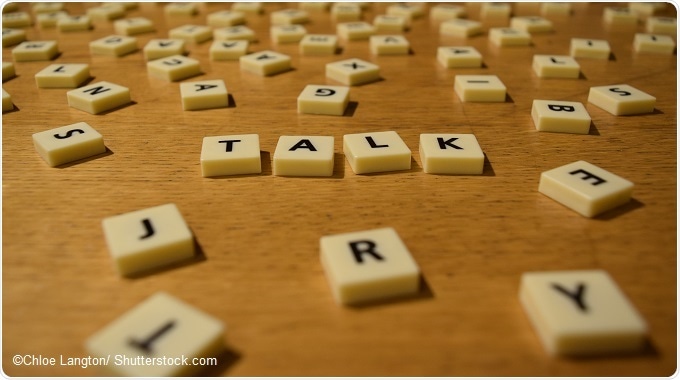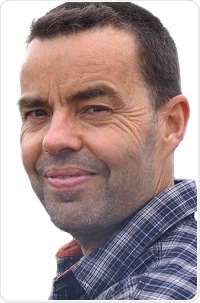An interview with Dr Lars Hansen, Consultant Psychiatrist and CMO, Healios, conducted by April Cashin-Garbutt, MA (Cantab)
What are anxiety disorders and how do they typically affect children and young people?
“Anxiety disorders” refers to a broad range of psychiatric conditions, where people are anxious. It covers things like obsessive-compulsive disorder, general anxiety disorder and phobic disorder.
Interestingly, anxiety is also a feature of severe mental illnesses such as psychosis and depression. We often forget about this. In these severe mental illnesses, anxiety can be a driving force behind the main symptoms such as low mood or, in terms of psychosis, some of the features such as hallucinations and delusions. It’s very important not to forget that.
The prevalence of anxiety disorders in children is much debated. If you look at the literature, you’ll see that different prevalences are reported. "Prevalence" simply means how many people have the condition.
Reported prevalences vary, with some people suggesting that one in three children will have an anxiety disorder at some stage during childhood, while some people say it's closer to one in ten. I think the true number is somewhere in between those numbers.
I don't think there's any doubt, and the research backs this up, that anxiety disorders are on the increase in children, for a whole variety of reasons. There's probably a lot of pressure being the first true internet generation, which makes them feel they have to perform, have to look good, have to post optimistic posts on Facebook and Instagram and all those kind of things. That's probably pushing the numbers up.
It does differ in some ways from anxiety in adults. It's often a hidden problem. There are a lot of children who are somehow coping by avoiding things such as school and contact with other kids.
It is very important that we pick this up as a society, because anxiety disorders can be preludes to lots of problems in later adolescence and also in adulthood; mental health disorders such as schizophrenia, depression and substance abuse and also just a lower quality of life in general. It is very important that we pick this up and provide children with evidence-based treatments for their conditions.

How many children and young people experience an anxiety disorder and why is it so important that they can access treatments?
There's a huge gap between the need for and the provision of services for anxiety disorders in children. That's been recognized for decades, but it's just so difficult due to a lack of resources and qualified professionals to bridge that gap.
I think that as a society, if we don't give this kind of preventive input early on, we will end up with not only a lot of human suffering, but also a huge cost to society and to the NHS.
I'm working part-time in the NHS and we've got our backs against the wall, because we're faced with a wave of psychiatric morbidity, both in children and in adults. We do need to find some new, innovative ways of dealing with this, without diluting the quality of the input that we're giving people.
In what ways do treatments for anxiety disorders differ between children and adults?
That is a good question because it differs in some important ways. It's very important that, in a child, we assess what we call “therapy readiness”. We have to be developmentally sensitive. There's a huge difference between a 7-year-old and a 17-year-old in terms of how much they can take.
Children vary greatly, even kids of the same age. We have to apply more flexibility than we do with adults. We have to build the therapeutic rapport. Of course, that’s also important for grown-ups too, but it is absolutely essential for the kids.
With children, there's more focus on the behavioral side of things. While with grown-ups you can talk in a bit more of a sophisticated way about the cognitive or thinking problems that they have, with children, there's a lot of focus on behavior.
We do what we call “emotional education”, where we teach kids about whether we need to respond to all of our emotions. We teach them relaxation and we also use a lot of exposure. If kids are afraid of leaving mom, for example, then, of course, sadly the treatment is that they have to leave mom for short periods of time. Then they realize "Oh, yeah, after five minutes I'm actually managing. I can do this." Then we do it for a little longer.
That's probably the main difference. Cognitive therapy, in itself, is based on really condensed common sense. That's all it is. The principles are the same for grown-ups and adults; it's more the details that are different.
We look at we call distorted thinking, e.g. ‘all or nothing thinking’ ‘personalising’ etc. We also approach behavioral analysis and look at how they could behave in a way that will be conducive for better mental health. Those are the principles, both for grown-ups and for kids, but the variation concerns the focus on behavior because that's easier for the kids to understand, depending on their development.
Can you please describe in a little more detail what exactly Cognitive Behavioral Therapy (CBT) is?
Cognitive behavioral therapy is a talking therapy that grew out of psychoanalysis in the 1950s and '60s. It was developed by American psychiatrists, especially, at around that time. It is a therapy that attempts to identify maladaptive thinking and maladaptive behaviors, to then see if that thinking and behavior can be reconstructed. It's a here-and-now approach.
CBT has an enormous amounts of scientific evidence, both for treating anxiety in children and in grown-ups, and also for treating depression and psychosis. The evidence base is really very well established, unlike some other talking therapies that are also widespread, but for which the evidence base is not of the same strength.
I would like to add that there are very few side effects involved in this. Most people can immediately see the usefulness of CBT. It differs significantly from treating children with medication, in which case there are potentially devastating side effects.
What are the main challenges with CBT that Healios’ service has aimed to overcome?
We noticed early on that so many of these children are actually in need of treatment, yet they can't access it. We're very keen to see if we can bridge that enormous gap and hopefully deliver evidence-based treatments that can reduce the risk of mental illness later on in life.
It is treatment, but it's also prevention. Again, there is scientific evidence to support the idea that if you treat early on, you're less likely to have serious problems later on in life. Of course, it benefits the individual and their family, but it also benefits society.
In Healios, all our approaches are family-centric; the family is involved in the therapy. Research supports the fact that it makes the therapy more efficient because you can also address some of the dynamics going on in the family that may be toxic for the child and for the grown-ups.
Can CBT prevent onset of the other mental illnesses young people with anxiety disorders are at a greater risk of developing?
The answer to that is a resounding yes. Anxiety is very much seen as a predictor of later, life-long conditions, although it is not necessarily the case. If we can teach people some basic stuff about how to handle anxiety, how to handle rejection and how to handle a failed exam, for example, I think we can really reduce human suffering, as well as costs to society.
As I've mentioned 100 times already today, we've got the evidence, but in the traditional NHS system, we haven't got the resources to treat our patients.
In what ways do you think CBT services for children and young people with anxiety disorders can be improved?
It can be improved by thinking out of the box. We have to do new things because we simply don't have the finances or the resources to continue in the way that we are. We need to include the family much more in the approach.
We have been taught that we should be patient-focused. That's of course right, but it's too narrow. We need to include the surroundings, because often the cause of the anxiety, or at least part of the cause, is within the family dynamic and you get a unique chance to address that when you take this family-centric approach.
I also think that we need to use digital medicine to its full potential. We are very far from that stage now. We can do it a lot better and we can learn from it. Simultaneously, we need to develop more scientific evidence for these specific, new approaches.
What do you think the future holds for CBT and anxiety disorders in children?
I think it is the future. We cannot continue the way that we are doing things now, not offering talking therapies while medicating a large number of children, because of the side effects, which can even sometimes be lethal.
I think CBT offers such a reasonable alternative. The underpinnings of CBT make straightforward common sense to most people and it is very acceptable to them. There are no side effects. People actually become wiser and better equipped to deal with life's vicissitudes when they've had CBT.
What feedback have Healios received?
We're working with this approach at a number of sites across England and the feedback is fantastic. I think one of the ways that we can judge that is by how many people actually continue the therapy. The numbers are much higher than they would be for medication and they are even higher than for face-to-face therapy. That may be because people can receive the therapy in the comfort of their own home.
Can you please explain what behavioral activation is and whether there is much evidence that it could work for children?
Behavioral activation is a sub-component of CBT. It's a bit more sophisticated than that, but the idea is simply to make people do more things, because we know activity has a strong antidepressant effect.
We also use that in the Healios approach, along with a really innovative program where the children can contribute in a way that would be very difficult to do in simple face-to-face therapy. You can let them take over the reins. You can make them draw and you can make them line up what their interests are, for example. Behavioral activation is part of all of it.
Where can readers find more information?
You can find more information on our website, which is www.healios.org.uk
About Dr Lars Hansen
 Dr Lars Hansen is a consultant psychiatrist working in Early Intervention for Psychosis in Hampshire. He is also a member of the Royal College of Psychiatrist and an Honorary Senior Lecturer.
Dr Lars Hansen is a consultant psychiatrist working in Early Intervention for Psychosis in Hampshire. He is also a member of the Royal College of Psychiatrist and an Honorary Senior Lecturer.
He graduated from Copenhagen University and then went on to train as a psychiatrist in Paris and London. After his Royal College membership exams he completed a MD at Southampton University titled “The influence of CBT on suicidality in patients with schizophrenia”.
He holds a Dip in Cognitive Therapy also from Southampton University. He has published articles mainly in the areas of schizophrenia, cognitive therapy, suicidality and akathisia.
Lars has participated on programs on mental health issues on ITV, Channel Four and the BBC radio and television along with publishing a book on the mindset of the immigrant called “Destination Integration”. He has been the Chief Medical Director of Healios since 2013.